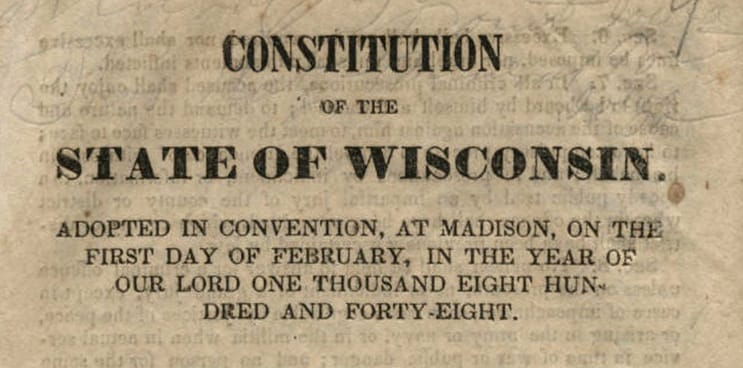Changing the maps made a difference; changing the process will make a permanent difference
How can gerrymandering be prevented in the future? Several steps will need to be taken.

By Penny Bernard Schaber
Before the complex legal fight in 2023 that resulted in new state legislative district maps, Wisconsin had an unbalanced state Senate and Assembly. One party controlled 22 of 33 Senate seats and 64 of 99 Assembly seats despite Wisconsin being about a 50-50 state demographically.
Those new maps drawn in 2023 resulted in a much more balanced state Legislature, with one party holding just 18 of 33 Senate and 54 of 99 Assembly seats.
The maps are changed every 10 years based on the Federal Census. This is known as redistricting, which happens in all states in various ways. In Wisconsin the party with the majority of seats has the responsibility to approve the maps.
If there is one-party control in the Senate, Assembly and the Governor’s office then the majority can draw the maps to their clear and distinct favor. This is the essence of gerrymandering. One-party control happened in Wisconsin in 2010. A significant gerrymander was the result. Those gerrymandered maps remained in place until the 2023 legal battle that redrew the maps.
How can gerrymandering be prevented in the future? Several steps will need to be taken.
The first step in eliminating gerrymandering in Wisconsin is passing legislation setting up an Independent Redistricting Commission (IRC.) The IRC would be made up of citizens who are not partisan or politically connected and who would not benefit from how the legislative maps are drawn. There is a draft proposal for an IRC being developed by a group of concerned citizens connected with the Fair Maps Coalition, Wisconsin Democracy Campaign, Wisconsin Common Cause and League of Women Voters of Wisconsin. You can see the draft proposal here.
The draft proposal will need to be passed through the regular legislative process. In other words, it will need to pass as legislation through both our state Senate and state Assembly and then approved by the Governor. This would set up an IRC in Wisconsin but would still leave the power of approving the legislative maps in the hands of the Legislature. That is because our state Constitution states that only the Legislature can approve legislative maps. So to permanently ban gerrymandering another complex step is needed.
Wisconsin voters would need to approve a constitutional amendment that gives the IRC the responsibility and authority to complete both the map-drawing and map-approving processes. Passing a constitutional amendment is more complicated than passing legislation but it can be done.
A constitutional amendment must be passed by the state Legislature in two consecutive legislative sessions. It does not need the Governor’s signature. The amendment is then put on an election ballot and is passed or rejected by voters in Wisconsin. If passed, the amendment would change the Wisconsin Constitution, putting the authority to draw and approve legislative maps into the hands of an Independent Redistricting Commission.
You can help make banning gerrymandering a reality by getting involved. Check the Fair Maps Coalition web page for much more information and to learn about Community Hearings on Fair Maps in your area.
Be sure to contact your legislators asking them to support an IRC.






